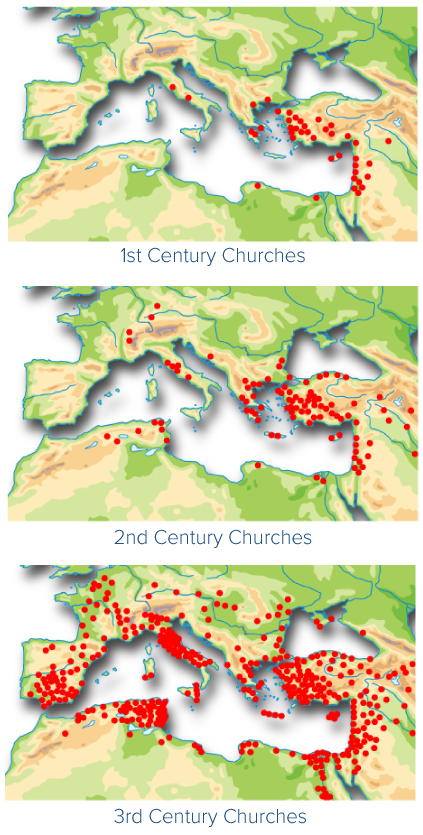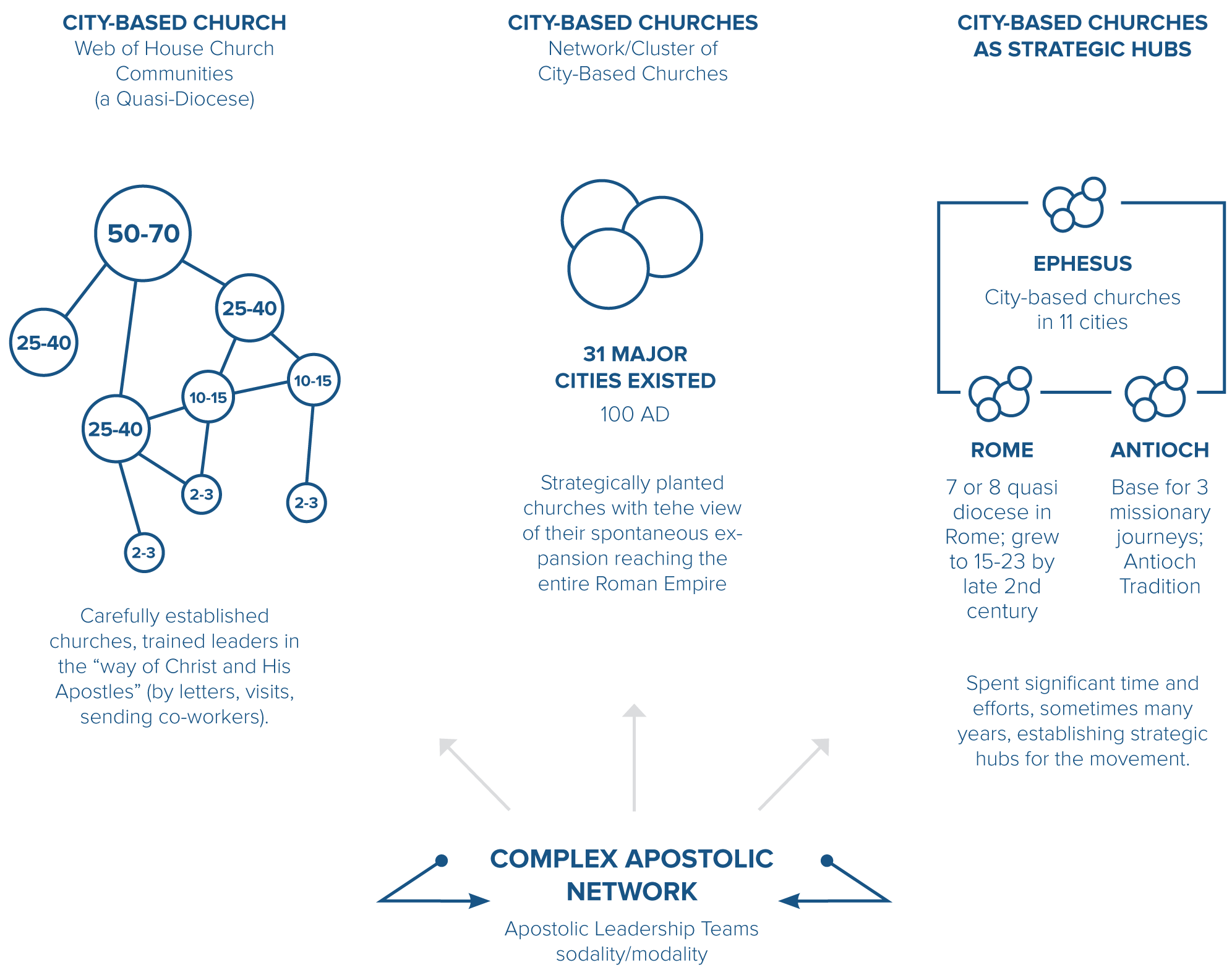In one generation, these small churches turned the world upside down, and in 300 years spread across the Roman Empire––radically transforming that entire region of the world. This tradition, based on the way of Christ and His Apostles is known as the Antioch Tradition.
Early on in the expansion of the churches, it is clear in Acts that networks began to form: the Jerusalem Council, the letter to the churches from the Council, the gift collected for the Jerusalem churches from the Gentiles churches, the network of letters circulated, etc.
In one generation these small churches turned the world upside down and in three centuries radically transformed the Roman Empire. The chart to the right shows the multiplication of churches from the first to the third centuries.
This tradition, based upon the way of Christ and His Apostles, is known as the Antioch Tradition. It survived to the 4th century but was replaced by western Greek and Roman traditions. As the gospel expands now to the Global South, we need to return to the Antioch Tradition–– to the way of Christ and His Apostles.
The Great Commission, recorded in the gospel and unfolded in Acts, is a worldwide multiplication of churches.
Today, missions, driven by western enterprises, see the mission as primarily a multiplication of individuals, as epitomized in parachurch organizations propagating an American “discipleship movement” that focuses on the multiplication of individuals not churches.
As the gospel shifts in the 20th and 21st centuries to the Global South, especially to Asia in this century, we are quickly returning to the apostolic era. It is essential that we visit the New Testament afresh in these historic times.

Mapping the growth and expansion of the Early Churches and discovering the secret of their successful multiplication.
As the Early Church expanded, the shape of the early church networks that emerged is also important to understand as we strive to get back to “the way of Christ and His Apostles.” From a careful study of the New Testament and early church research, we have attempted to map the complex network of the early churches that emerged towards the end of the apostolic age.
It is very important for both the Global South church-planting movements and the churches in the declining West to rediscover their roots as found in the apostolic traditions in Acts and the Apostles' letters to the New Testament churches. It is very important for us to look closely and carefully at this early church-planting movement to discover its success. We must understand why these churches were so strong and the secret of why they so successfully multiplied across the Roman Empire.
